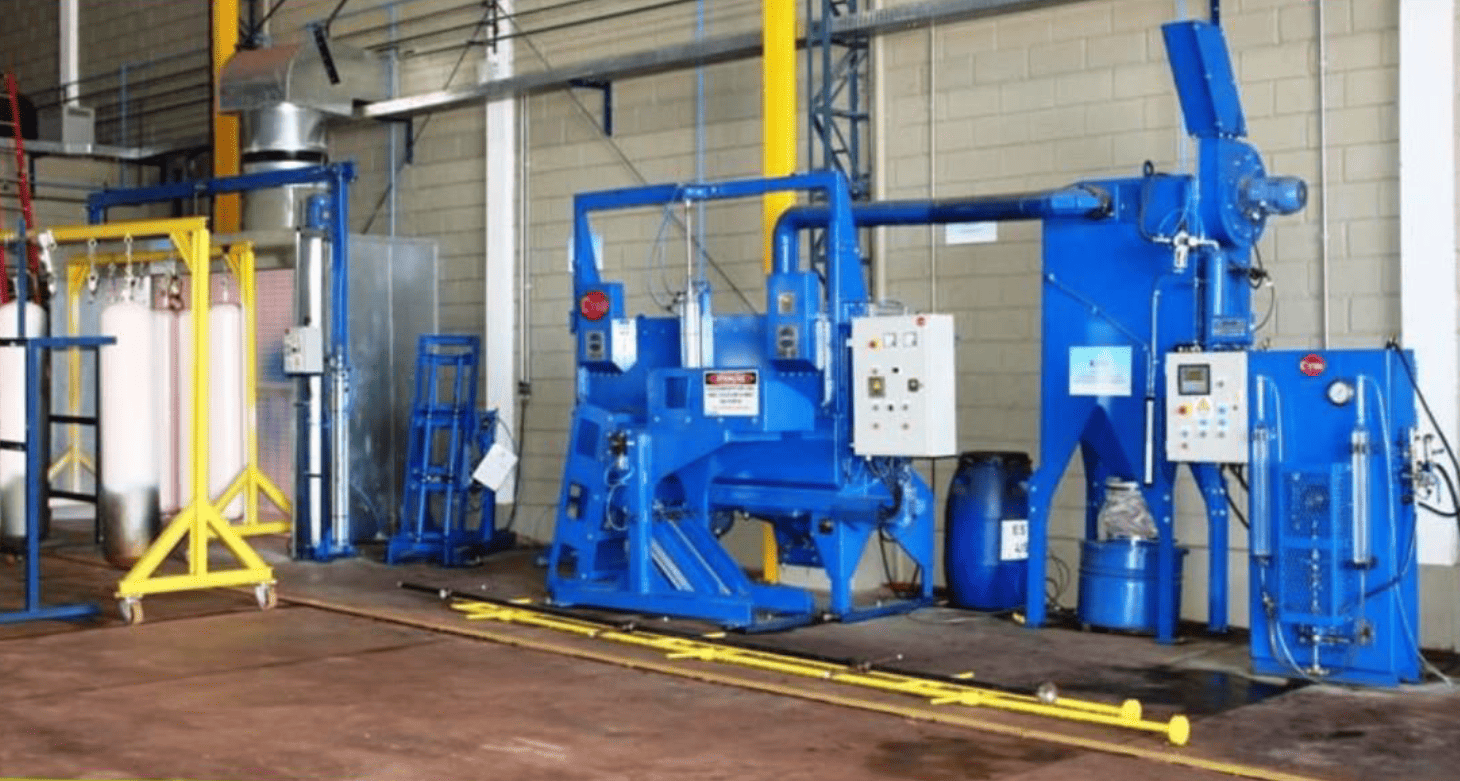
Hydro testing of CNG (Compressed Natural Gas) cylinders is a mandatory safety procedure carried out to ensure the cylinder’s structural integrity, durability, and ability to safely withstand operating pressure. According to statutory norms (PESO/Explosives Department regulations in India), every CNG cylinder must undergo hydrostatic testing every 3 years (or as per manufacturer and regulatory guidelines).
Hydro testing of CNG (Compressed Natural Gas) cylinders is a mandatory safety procedure carried out to ensure the cylinder’s structural integrity, durability, and ability to safely withstand operating pressure. According to statutory norms (PESO/Explosives Department regulations in India), every CNG cylinder must undergo hydrostatic testing every 3 years (or as per manufacturer and regulatory guidelines).
The purpose of hydro testing is to:
Verify that the cylinder can safely withstand internal gas pressure.
Detect leaks, cracks, corrosion, bulges, or other defects.
Ensure compliance with safety regulations and extend the usable life of the cylinder.
We offer cost savings, environmental benefits, tax incentives, & efficient fuel consumption for companies.
In India, the growing adoption of dual-fuel systems, particularly gasoline and CNG, has brought renewed focus on safety measures like hydro testing. Vehicles running on both fuels offer economic and environmental advantages, but require strict maintenance protocols to ensure continued safety. Hydro testing is especially vital for CNG cylinders, which store high-pressure gas that can pose serious risks if not properly tested.
Hydro testing of CNG cylinders is a process where the cylinder is filled with water and pressurized beyond its normal operating pressure to check for leaks or deformities. This test helps determine whether the cylinder can safely continue to hold compressed gas. In India, the government mandates hydro testing every 3 to 5 years, and only authorized centers are allowed to carry out this procedure. Compliance is enforced through RTO vehicle fitness inspections and insurance requirements.
Most dual-fuel vehicles in India rely primarily on a gasoline fuel system, which includes components like fuel injectors, fuel pumps, and ECU controls. While these components are designed for petrol, when a vehicle is fitted with a CNG kit, additional systems are integrated, including the cylinder, pressure regulator, and CNG injectors. Regular maintenance and hydro testing ensure that these systems work together without safety compromises.
CNG and gasoline systems have fundamentally different storage and delivery mechanisms. Gasoline is stored at ambient pressure, while CNG is compressed to around 200 bar. This makes the cylinder's strength and sealing critical. Hydro testing plays a vital role in preventing catastrophic failures that could arise from weakened or corroded cylinders, especially in Indian conditions where dust, heat, and humidity can affect material durability.
Got my car's CNG kit fitted here. The team was highly professional, explained everything clearly, and the installation was super clean. Highly recommended!
Had heavy CNG fitting done for my commercial vehicle. The performance boost is noticeable and mileage has improved too. Great job by the technicians!
Went in for CNG tuning as my car was showing low mileage. They diagnosed the issue quickly and after tuning, it runs smoother than ever.
Very impressed with their heavy vehicle CNG fitting service. The staff knew exactly what they were doing and handled my truck professionally.
I was worried about CNG leakage, but their hydro testing process was very detailed and thorough. Got the certificate within the same day!
If you're looking for professional CNG services, this is the place. They fitted the kit in my sedan and tuned it perfectly for performance and safety.
Installed a CNG Sequential Kit from here and I’m genuinely impressed! Smooth performance, no engine knocking, and excellent fuel efficiency. Great value for money!
I opted for a Conventional CNG Kit for my older model car. The installation was perfect and the car now runs flawlessly on CNG. Reliable and cost-effective solution.
Went for Hydro Testing of my CNG cylinder. The staff handled it professionally, and I received my certification within a few hours. Clean and certified work.
Ground clearance was a big issue after CNG installation. Their Ground Clearance Kit made a huge difference no more speed breaker worries. Highly recommended for low cars!
Bought both the Sequential Kit and the Ground Clearance Kit from them. The fitting was very professional, and they took care of even the small details. Very satisfied with the products and service!